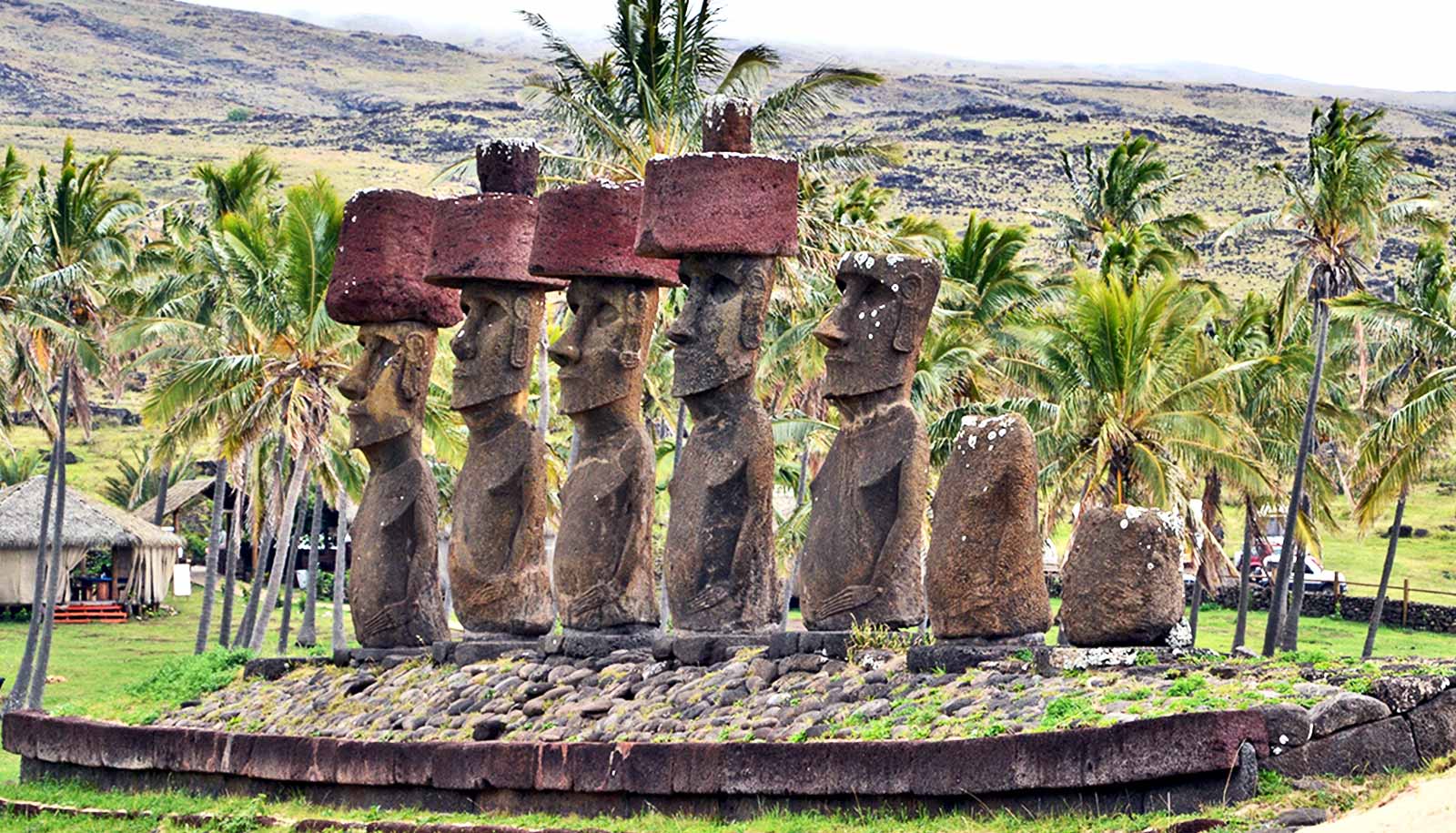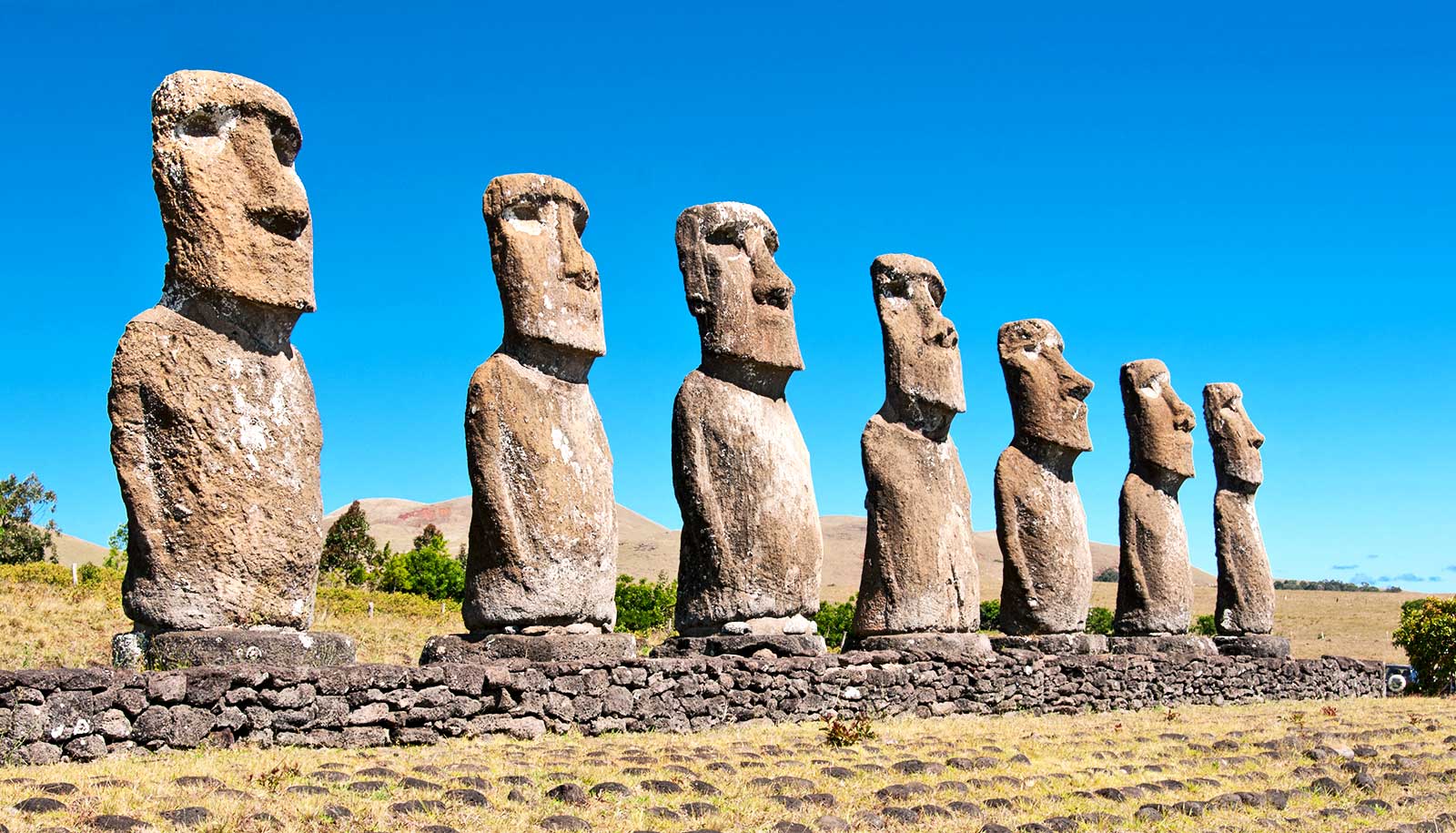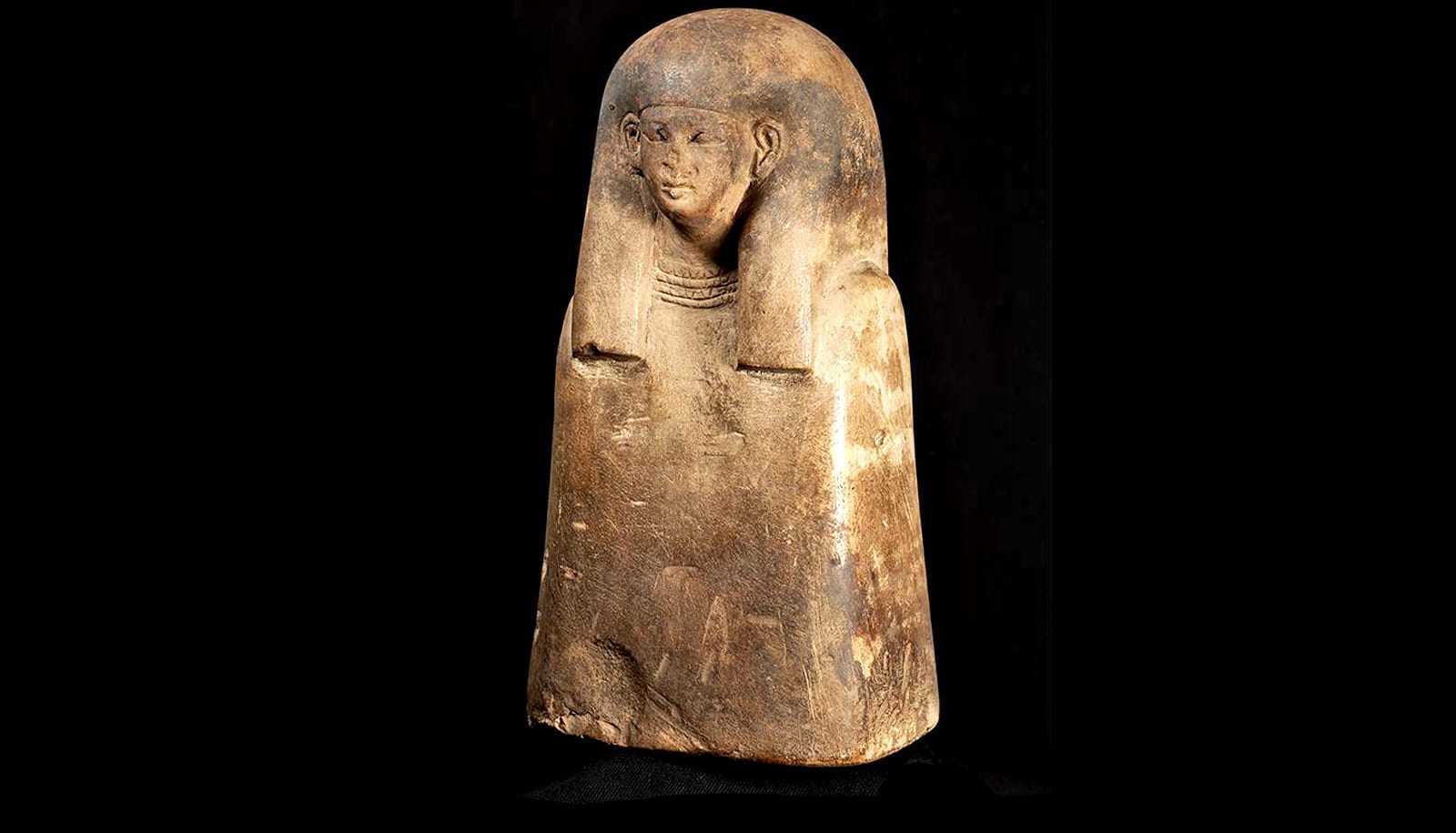Easter Island’s prehistoric societal collapse didn’t happen as researchers have long thought, according to a new study.
Researchers have developed a chronology of monument-building and re-examined written observations of early European visitors. With the help of statistics, the research clarifies variable radiocarbon dates pulled from soil under the island’s massive stone platforms topped with megalithic statues and large, cylindrical stone hats.
The new findings indicate that descendants of Polynesian seafarers who settled Rapa Nui, aka Easter Island, in the 13th century continued to build, maintain, and use the monuments for at least 150 years beyond 1600—the date long hailed as the start of societal decline.
“The general thinking has been that the society that Europeans saw when they first showed up was one that had collapsed,” says Robert DiNapoli, who is completing doctoral work in the anthropology department at the University of Oregon. “Our conclusion is that monument-building and investment were still important parts of their lives when these visitors arrived.”
Step-by-step monument building
Easter Island, a Chilean territory, is 1,900 miles from South America and 1,250 miles from other inhabited islands.
By closely examining data from 11 of the sites, the researchers connected radiocarbon dates from previous research to the order of assembly required to build the monuments. A central platform came first. Other sections—crematoriums, burial sites, plazas, statues, and hats—were gradually added. Bayesian statistics were then used to refine the radiocarbon dates and estimate the timing of each these construction events.
Knowing the ordering of dates at a site can help refine radiocarbon dating, which often have a lot of uncertainty, such as large date ranges, DiNapoli says.
“Imagine building something with Lego bricks. You have to do it in a certain order, building over time,” he says. “These monuments also have a necessary order of assembly, and radiocarbon dates from earlier building stages must come before later ones. This information is useful because it allows us to deal with the variability in radiocarbon dates that came from the excavation in a more precise way.”
Monument building, he says, began soon after settlement and increased rapidly, with a steady period of construction continuing beyond the hypothesized collapse and European arrival.
Europeans on Rapa Nui
Dutch travelers in 1722 noted the monuments were in use for rituals and showed no evidence for societal decay. The same was reported in 1770, when Spanish seafarers landed. However, when British explorer James Cook arrived in 1774, he and his crew described an island in crisis, with overturned monuments.
“Once Europeans arrive on the island, there are many documented tragic events due to disease, murder, slave raiding, and other conflicts,” says coauthor Carl Lipo, an anthropologist at Binghamton University. “These events are entirely extrinsic to the islanders and have, undoubtedly, devastating effects. Yet, the Rapa Nui people—following practices that provided them great stability and success over hundreds of years—continue their traditions in the face of tremendous odds.”
The approach developed for the research may be useful for testing hypotheses of societal collapse at other complex sites around the world where similar debates on timing exist, the researchers note.
DiNapoli has been to Rapa Nui several times as a graduate student. “I’ve wanted to be an archaeologist since I was a little kid,” he says. “Rapa Nui was a place I was always interested in. It’s this amazing mystery, of these people who live on a small, isolated island.”
The study appears in the Journal of Archaeological Science.
Additional coauthors are from the University of Arizona and the International Archaeological Research Institute in Hawaii. Funding for the work came from the National Science Foundation.
Source: University of Oregon



